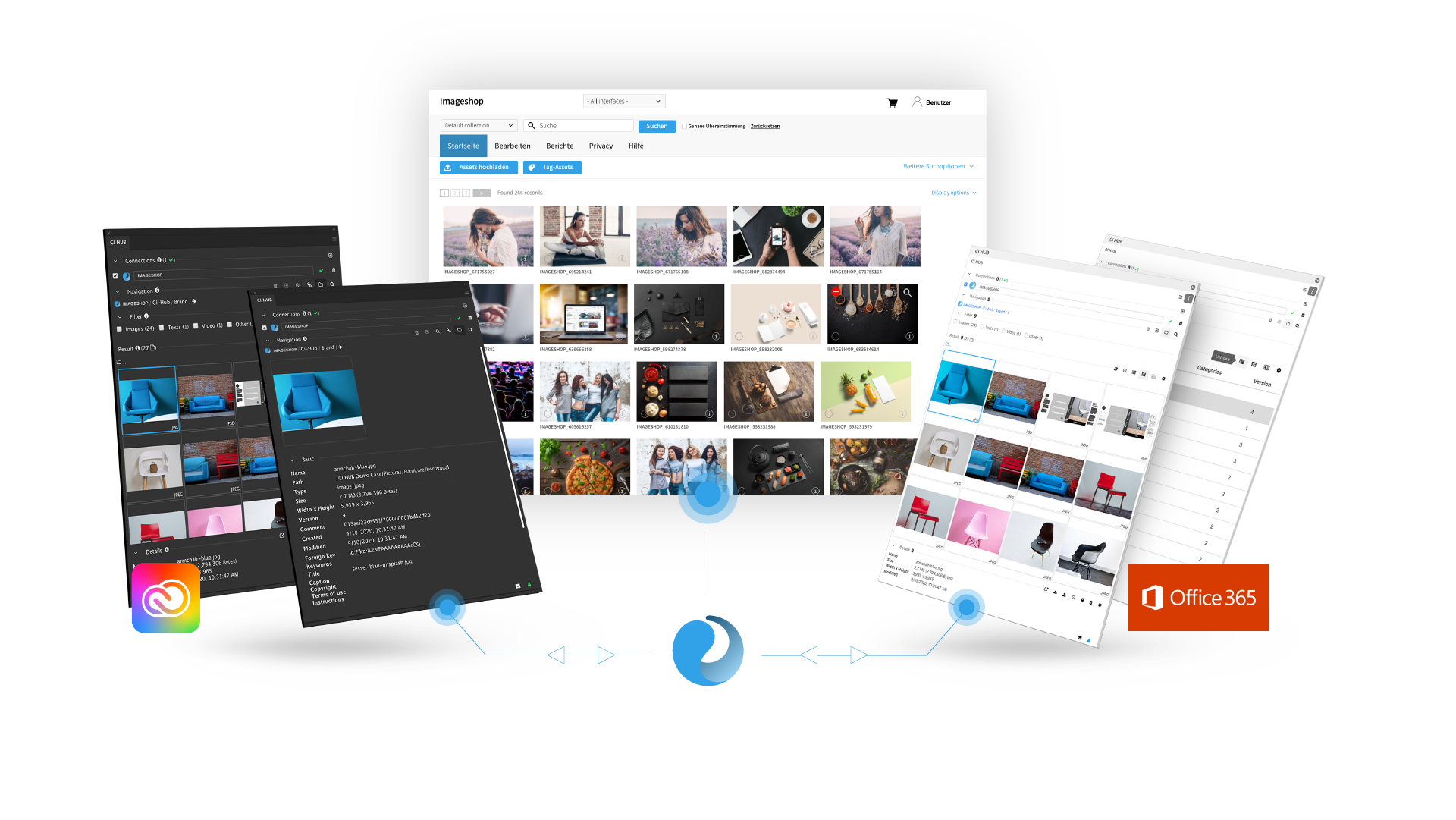With Imageshop, organizing your images has never been easier. And with the proper use of metadata, Imageshop can become an even more powerful tool. Find out how you can streamline the organization of your images, and get tips on how to enhance your images with more and better metadata.
It is said that a picture is worth more than a thousand words. The same can be said about the metadata of the image. It tells where the image was taken, when it was taken, its format, and much more. And that’s just the technical metadata that the camera generates automatically. Additionally, you can add metadata such as description, keywords, photographer, and usage rights.
At Imageshop, we think that this metadata is invaluable!
An image file without metadata is like a needle in a haystack when it sits among countless other files. Metadata makes the file searchable, both for the company’s employees and their customers. And if the file is publicly published, the metadata allows it to be searchable online, which increases your business’s visibility in search engines like Google and Bing.

Metadata is like a treasure map that makes it possible to find your images.
Proper use of metadata can also help the company with brand building by making the most relevant and recent brand assets easily accessible and easy to find. Another important thing to consider is copyright and usage rights for the company’s image files. Metadata makes it easier to keep track of how and for how long images can be used.
Because metadata is so indispensable, Imageshop has developed a system that can use an image file’s metadata to categorize and tag the file, make it searchable in the image bank, keep track of usage rights, and much more. Combined with our use of artificial intelligence for automatic image recognition, it has never been easier to organize large quantities of image files.
How to add metadata in Imageshop
Imageshop offers a powerful tool for storing, organizing, and displaying images for businesses and organizations of all sizes. However, for our tool to work at its best, it relies on good information about the files being uploaded. That’s why it’s important for our users to input sufficient information when uploading images. To make this task easier, we have developed smart solutions to assist with this.
As an administrator, you can easily upload large quantities of images to Imageshop with drag and drop. You can even upload via mobile if needed.

It’s easy to upload images to Imageshop with drag and drop and on mobile. Here you can see the Norwegian interface, but you can use Imageshop in a number of different languages.
But uploading the images to Imageshop is only half the job. You also want the users of your image bank, whether they are employees in your organization or the public, to be able to find the images they need. That’s why it’s important to have good and accurate information about the images. And this is where metadata plays a crucial role.
Imageshop includes automated processes for filling in metadata, saving the user time when uploading images. Depending on how the image bank is set up, it can read metadata from the uploaded image files and populate information for the individual images. Artificial intelligence can also be used to find suitable keywords for the images and recognize faces. Additionally, you can manually add any other metadata that fits your business or organization’s needs.

Imageshop can add information from metadata and image recognition. Which metadata is used depends on how the user chooses to set up their image bank. Here you can see the Norwegian interface, but you can use Imageshop in a number of different languages.
If you frequently upload images with the same information, such as the same photographer or location, you can save time by creating a template. With a template, you don’t have to fill in the same fields every time you upload images. When you select a template, the information you have saved in the template will be automatically applied.

You can easily save metadata as a template to be used later on other images.
Thus, by using Imageshop’s tools and the deliberate use of metadata, you can make your organization’s images searchable, making it easy to find exactly the images you need when you need them.
How to get more and better metadata
As you can see, image organization becomes even easier in Imageshop with good metadata. But now you might be wondering what you and your organization can do to ensure that the images you upload to Imageshop have sufficient metadata. Here are some tips on what you can do to ensure more and better metadata on image files.
Make a plan
Consider the goals of your organization, how the files in Imageshop will be used, and what metadata is necessary. Also, think about who will be using Imageshop and who will be creating and maintaining the metadata. Create a plan for which metadata should be included. You’ll likely realize that not all metadata is equally important, so categorize it as ‘necessary,’ ‘recommended,’ and ‘optional.
| Metadata | Description | Priority |
| Title | Descriptive title | Necessary |
| Photographer | Name of photographer | Recommended |
| Location | Where was the image taken | Optional |
Do not include sensitive information
Metadata should be treated like any other type of data. This includes complying with the General Data Protection Regulation (GDPR) and your organization’s privacy policy. So be careful not to include sensitive information or personal data in the metadata.
Also, be sure not to include information that is sensitive or confidential to your organization. Remember that anyone with access to an image can read the metadata.
Let the camera add as much information as possible
If you or someone within your organization is responsible for taking pictures, it might be wise to take a look at the camera settings. Whether it’s a DSLR or a smartphone, the camera has many settings. This includes what metadata will be saved in each image file, such as the recording of location. Turn on all the relevant settings to capture as much useful metadata as possible
On many cameras, you can also add descriptive metadata such as photographer and copyright, so that all images taken with the camera are automatically saved with this information. Find out how to do this on your camera, and that’s one less thing you’ll have to fill in manually later.
Add metadata in the image editing software
In many cases, images need to be edited before being uploaded to Imageshop. In programs like Adobe Lightroom, it’s easy to add tags, descriptions, and much more. If your organization uses professional photographers, this is something you might want to discuss with them.
Adding descriptive metadata early has several advantages. Not only can it make uploading to Imageshop easier and more efficient, but it also ensures that the metadata is carried over to other programs and platforms if the images are to be used elsewhere.
Make titles and descriptions that everyone understands
It’s important that your organization’s images are presented in a good way. To achieve this, you need clear titles and descriptions that explain the image content and capture the user’s interest.
A good title and description are understandable to everyone and do not contain internal jargon that only someone who has worked in the organization for years would understand.
Involve the whole organization!
The last and most important tip is to involve everyone who will be taking, uploading, and using images. Make sure everyone understands how Imageshop uses metadata to organize and make images searchable. Also, ensure that everyone adding metadata uses the same words and terms. When the entire organization is involved, it becomes easier to spot errors in the metadata, the workflow becomes more efficient, and everyone benefits from good and effective image organization.






